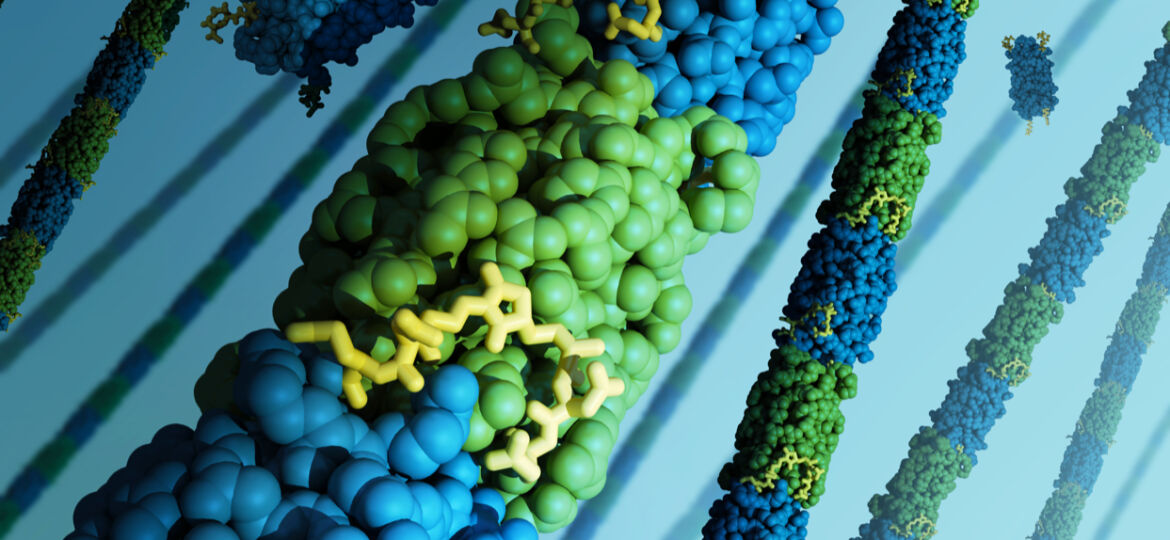
Stemming from a collaboration between the lab of Jeffrey Saven and researchers at the University of Delaware, a new study in Nature describes a synthetic polymer subunit that could usher in a new wave of materials and applications.
Polymers are materials that are made of repeating chains of smaller molecules, with natural examples including rubber and silk and manmade polymers including nylon, neoprene, plastics, and resins. Creating new polymers in the lab is a process that is difficult to control since structures often form as unorganized masses of intertwining threads, so researchers are looking for ways to create polymers that are easier to customize for a wider range of applications.
New research describes a novel type of synthetic polymer subunit that could usher in a new wave of applications. A collaboration between researchers at Penn and the University of Delaware shows how self-assembling and customizable polymers can be created by linking these new subunits, known as “bundlemers,” using efficient and controllable chemical reactions. The study was published in Nature.
Before the team synthesizes anything in the lab, Saven’s computational chemistry group uses models to analyze possible amino acid sequences to help the group decide which combinations would make the best candidates for synthesis and testing. Computational chemistry is an essential starting point due to the enormous number of sequences possible, with a choice of one of 20 natural amino acids at each position; even a short chain of 10 amino acids has more than 10 trillion possible combinations. Their models also take into account how amino acids interact with one another on a chain to provide insights into what types of structures, like helixes or rods, the sequences might form.
Saven says that it’s unusual for materials made of short, self-assembling peptides to form such long, thin, and straight objects and that the bundlemers’ overall structure doesn’t resemble anything seen in nature. “In nature, there are microtubules and actin filaments inside cells that support the cell’s architecture, but those tend to be much larger in terms of the filament radius and size of the building block,” he adds.
Beyond possible future applications ranging from high-performance fibers, biomedicines, or as substitutes for superstrong materials, the bundlemers can also become a platform for other applications not yet imagined. “These are tools for anybody to use, whether you’re a chemist, engineer, or physicist,” says Pochan. “It’s even hard to think of an equivalent material or experimental tool people use widely. It’s like a toolbox for anybody to design future things.”
Beyond possible future applications ranging from high-performance fibers, biomedicines, or as substitutes for superstrong materials, the bundlemers can also become a platform for other applications not yet imagined. “These are tools for anybody to use, whether you’re a chemist, engineer, or physicist,” says Pochan. “It’s even hard to think of an equivalent material or experimental tool people use widely. It’s like a toolbox for anybody to design future things.”


